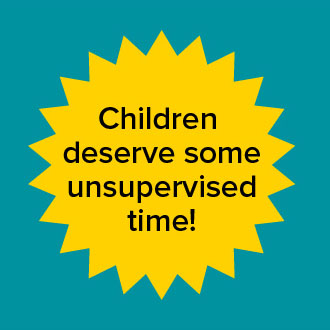Michael yfdrediyab
Hynes is the superintendent of the Patchogue-Medford School District on Long Island. As he confesses in this short and inspiring video, he loved school as a kid but gradually grew to hate it, and it’s only thanks to his love of tennis that he didn’t drop out. In fact, he hated school so much that he became a teacher, then a principal, and at last a superintendent with the power to reform.
Hynes’ goal is redirecting schools away from test scores and toward the “whole child.” That might sound jargon-y, but it makes sense. Kids are not just brains with #2 pencils attached. They deserve an all-around education — a Physical, Emotional, Academic and Social education, or P.E.A.S. for short. As for the “P” part, he writes:
Most adults understand that a sedentary work day is far from ideal, and leads to
reduced output. Cutting edge corporations like Google design their work
campuses to include gymnasiums, swimming pools, volleyball courts, and
walking paths. Businesses provide gym memberships to their employees for use
during the workday. With more movement comes more focus, less boredom,
fewer absences, better attitudes, and more positive outlooks..
The trend in public school, though, has been the opposite. As the emphasis on
attaining high scores in math and ELA grows, the reaction has been to increase
classroom time, on the assumption that the more time spent on the subjects will
correlate with better performance. All too often, that extra classroom time is
pulled from recess time, or from physical education time.
He even quotes a mutual hero, Peter Gray:
Recess can no longer be thought of as a throw-away. In fact, recess is critical to
children’s healthy growth, and to their successful performance in
school. Children run, play, climb, swing – and smile. They connect with their
peers….According to Dr. Peter Gray from Boston College, the importance of play is crucial for children’s healthy
psychological development and ability to thrive in life, and yet it is woefully
underestimated by parents and educators. “In short, play is how children learn to
take control of their lives,†states Gray.
Hynes didn’t just mull this truth. He put it into the school day:
The Patchogue-Medford School District in New York last year increased recess
every day from 20 minutes to 40 minutes, along with incorporating a 40-minute
lunch for every child. Not only did attendance improve, but teachers and
administrators reported significantly fewer disciplinary issues in the classrooms.
In some of the elementary schools, the discipline referrals were reduced by over
half. And best of all, parents remarked that their children couldn’t wait to come to
school again.
Read about the rest of the P.E.A.S. agenda here. And let us know if you see any P.E.A.S. sprouting at your kids’ schools, too. – L.
.
.




I hate to burst a bubble, but there is no such thing as reform.
Schools are like any other organization of humans. They are or will become self-licking lollipops, only concerned with their own survival. Any type of compromise they may demonstrate is solely to maintain the status quo. Some issues there may be wiggle room, others there may not be. Make no mistake that what gets changed is on their terms.
The only long lasting and meaningful change is revolutionary in nature. Homeschooling, market-based vouchers for all students, etc. The problem is revolutionary changes are uncertain. They rarely turn out as expected. This plays right into the hands of the “system.” Public education… it’s pretty reliable, but you deed your children over to them.
None the less, I’m happy they’re getting some more yard time. More is still better. But, we had a 20+ min lunch, 15 min morning break outside, and 60 mins of PE/recess in my schools 30 yrs ago. Just saying…
Right-O, Larry! The system is still a system. I’m more on board with John Taylor Gatto than Peter Grey.
That’s one of the things I like about my kids’ school. The younger elementary kids get a morning recess, lunch recess and afternoon recess, plus the classes do PE a couple times a week. Older elementary gets morning recess, lunch recess, and more PE than the younger kids.
The problem is that even though you can find proof that more breaks are better than hardly any the idiots in charge still think that if they spend every minute they can cramming knowledge into kids heads it will somehow stick and make kids that are much smarter than other countries kids.
Maybe instead of trying make our better than some other countries kids we should make ours the best they can be all around.
I’m shocked Google can get anything right at this point, but 100% agree recess is necessary and needed.
I do not think asking schools to adopt it again is asking too much. K-4 had 3 recesses and all students had an hour long PE session every day of the week when I was in school in the 1980s.
It is wonderful to see a school system administrator doing such fine work and recognizing the need for much more balance in the lives of children and, for that matter, in all our lives. My long-time colleague, 92 year old Art Teacher, Bob Steele, and I are co-authoring a book about the Balanced Curriculum that we hope with have some impact on countering the prevailing STEM syndrome in schools around the world and other misguided educational practices and community prohibitions.
The experiences and advocacies of Mr Hynes, and other visionary thinkers and practitioners, needs to become a broad social movement if we are to make a significant positive impact on youth culture. In this regard, to mount and sustain an effective reform we need to heed Margaret Mead who said the words we all know and yet sometimes forget, to wit, “Never doubt that a small group of dedicated people can change the world, in fact it is the only thing that ever has.” I hope many more of us can join Michael Hynes, Lenore Skenazy, Peter Gray and other courageous individuals in returning childhood to our children. The future of our culture depends on this kind of alliance and, unfortunately, there are many inhibiting factors that stand in the way of this kind of preservation of our cultural heritage. The preservation of all that we hold dear depends on our collective awareness, involvement and resolve.
My grandmother wanted me to have an education so she kept me out of school.
~ Margaret Mead
many tech companies have those facilities, or offer to pay for employee memberships of nearby gyms, but at the same time so overload those same employees with work that they have no time to make use of them, often don’t even have time to take lunch and coffee breaks, instead eating a sandwich behind their desks.
They’re no different from schools cramming teaching sessions into recess time…
Those on-campus gyms and pools sit idle most of the time every day, only filled with “volunteers” when there’s a photo shoot for some management magazine for which a few people are drummed up who’re already on the list of those next for layoffs because they’re not on a customer facing project with a too tight deadline.
Such is the tech sector as seen from the inside by someone who’s been working in it for over 2 decades.
When I was at primary school we had
0900-0915 morning registration
0915-1015 first lesson
1015-1030 morning break (recess)
1030-1130 second lesson
1130-1230 third lesson
1230-1315 lunch (including free play when not eating)
1315-1415 forth lesson
1415-1430 afternoon break (recess)
1430-1530 5th lesson (often story time or show and tell type lesson)
Wow. One of my schools ( middle+high school ) was even worse than this school used to be in terms of breaks. One 15 minute break, with a 20 minute lunch, all in the parking lot, and 45 minute PE in a small dance studio twice a week. High schoolers with good grades could walk off campus for lunch with a signed permission slip, but with 20 minutes, it felt very rushed.
Bathroom breaks were rarely permitted. During class, the teachers almost never let the students go, which resulted in a few unfortunate and unsanitary accidents. Let’s just say that their carpets really needed to be replaced at a certain point. During the breaks, it was inconsistent. Sometimes, a staff member would stand in front of the door and make the students ask another teacher permission, and state the reason for needing to go in order to go during lunch. Other times, students were free to go during lunch as they pleased. A few times, I remeber shoving the staff out of the way as they tried to block me without stating the purpose of my visit, and going in any way. It was great to watch them just stare with their jaw dropped and do absolutely nothing.
There should be laws protecting students and giving them inalienable rights when it comes to this stuff.
The changes are so painstakingly slow that it’s little wonder that many believe that nothing is changing at all.
I disagree. Things are definitely changing. An organization (even the government) is like a boat. The smaller the boat/organization, the quicker that it can change directions. The converse is also true. The bigger the boat, the longer it takes to change direction. The CSCL Globe is a container ship that can carry 19,100 twenty-foot containers. It’s so big that it could require 30 kilometers to turn around! Steering is difficult and it’s very easy to oversteer.
Awww, “the whole child.” I thought I was the only one who remembered this term from my teacher education days. I regularly use it to contrast with what our school district is pushing, which could be described as the “one-dimensional child” or the “exhausted after sitting for extended periods child.” On the bright side, our district is tops in the state as far as test scores and school grades go. Super meaningful when you’re ranked #50 nationally!
When I was in primary school here in Australia they had compulsory physical activity every morning (not sure what year I was in when it started). Plus exercise at recess and lunch time and organized PE classes. We went out for recess and lunch even in the hot Australian summer sun (temps of 30+ Celsius are not uncommon) although there was a rule that kids had to wear a hat as part of the uniform when outside.
I have no idea how things are like in Australian schools nowadays but with all the focus on standardized tests and other crap (NAPLAN etc), I doubt the kids of today get as much exercise as I did when I was in primary school.
With kids not getting enough exercise at school (due to the push towards standardized tests, no child left behind, common core etc and due to other reasons), not getting enough exercise outside of school (not allowed to go outside and play/get exercise because its “not safe”, having too much homework etc to get any exercise, spending too much time with games consoles/smart phones/tablets/handheld games/etc to get any exercise, organized sports getting in the way of play/exercise and whatever else) and eating massive quantities of unhealthy junk food, its no wonder the US has a huge problem with childhood obesity.
This site has really helped me to think about the questions to ask and things to do when my son gets to Kindergarten in two years. I don’t know what the play schedule is like but at least I know what to ask now. I can’t remember recess prior to high school. I was in south carolina for K-8th grade. All I do remember is the huge fields we had to play in. Some play structures but just a huge amount of space.
I don’t remember any recess at all in 8th grade when I moved to MD. We had PE for 1 period but that was it. In high school, you only had to take PE for one year and I waited till I was a senior to do so. Lunch was 50 minutes and 3 of the 4 years, I choked down lunch in 10 minutes in order to get to jazz band practice. You couldn’t go outside for lunch, officially. And there was no running around at all. It was eat and talk and then go to your next class.
It seems to me that there is more than enough data to say more recess=better school performance on a variety of factors. And yet we still miss the forest for the trees.
Ahaha… In first grade, school ends at over here. Every day. In higher grades, it slowly moves to 1300. From 7th grade on, afternoon lessons are added, but never more than 4h per week. America, quo vadis?
Hm, 11:20 didn’t go through. Elementary 1st to 2nd grade school days end at 11: 20.
Hm, 11:20 didn’t go through.
Good for them – and not just for more recess, but also for the longer lunch. I hate the way schools often rush kids through lunch: not only does it teach terrible eating habits for life, but many little kids find it hard to eat quickly. I remember finding that stressful back in my primary school days; although we had a full lunch hour, the teachers were in a hurry to shoo us out of the classroom (where we ate) and onto the schoolyard so they could go on break. They would rush us to eat in 15 or 20 minutes, but also monitor to make sure we didn’t throw away any food our parents had sent – I still remember choking down my sandwich and carrot sticks in a miserable panic every day.
Standards should not count for 100% of how well a school is performing.
Some degree of minimal standards reduce some schools being “separate but unequal”.
(Though not as obvious as when I grew up)
Include regular recreational breaks to burn off boredom.
A variety of extra-curicular activities to appeal to different kids.
sports, art, band, industrial arts shop, debate club
In your previous post you pondered Secretary of Energy.
Secretary of Education would be a better use of your talents.
Google didn’t do that because it was “good” for their employees, they did it to make sure no one ever leaves work. That’s also why companies have dry cleaners, dentists, cafes and the like as well. It’s incredibly UNhealthy, actually.
Next step after that, housing: https://www.cnbc.com/2017/07/07/facebook-and-google-are-building-affordable-housing-in-silicon-valley.html. Because when you spend 16 hours a day with your co-workers, why not go ahead and make them your neighbors as well?
all of this is true except for why Google does it.
Google has all those perks to make it *seem* like they as a company value all that stuff, and subscribe to work-life balance,, but in reality they do it to subtly influence you to never separate life and work.[Like casinos with no clocks or windows]
If you can eat, do laundry, recreate, etc. all a few yards from the office, why ever go home? You can be at work *all the time*! Especially when your subsidized shuttle bus has wi-fi.
I guarantee none of that movement stuff is really getting used, and when it is, it’s a treat and anomalous, not part of the regular workday. this is actually much closer to the “school solves activity problem by installing treadmill desks for students
I’m totally in favor of massive recess, though.
(I had 2 distinct recesses + daily gym through 5th grade.)
yet again no reference to experience of other nations, as though Planet Earth consists of nothing, no one, outside the US?
i don’t read Google affording ‘free time’ generally or for other distractions besides exercise eg social mingling, music, other play like checkers, time w/ animals.
IMO, better increased classroom time, less ‘homework’ — NOT less recess; and what happened to ‘study halls’? in large part because seems increasingly what ‘homework’ assigned expects/requires parents take the lead: enhancing unfair disadvantages for students whose parents less educated, busier/away working, otherwise less able/dedicated to helping w/ ‘homework.’ heartbreaking — esp to extent suffering students feel less loved, ashamed of parents unable to help them as much as peers’
what about participation in Gym class — which girls past grade school commonly declined in my little NW NJ town? their apparent apprehensions about changing/showering in locker rooms didn’t seem to necessarily hurt their performance in other classes, nor non-partipating boys, v. boys/girls who DID participate. naturally, better students more apt to responsibly participate, but i hardly saw/experience rewards of greater focus rest of day. why not more structured activities additionally — w/ students getting to choose to whatever degree between different sports/exercise, drama, singing/music/dance, art/photography, crafts/carpentry, debate . . . .? stuff now often left optionally to after school?
while disturbing to me, if many students would respond better to more privacy preparing for, recovering from gym class, perhaps schools should better provide for such option
Good for them – and not just for more recess, but also for the longer lunch. I hate the way schools often rush kids through lunch: not only does it teach terrible eating habits for life, but many little kids find it hard to eat quickly. I remember finding that stressful back in my primary school days; although we had a full lunch hour, the teachers were in a hurry to shoo us out of the classroom (where we ate) and onto the schoolyard so they could go on break. They would rush us to eat in 15 or 20 minutes, but also monitor to make sure we didn’t throw away any food our parents had sent – I still remember choking down my sandwich and carrot sticks in a miserable panic every day.